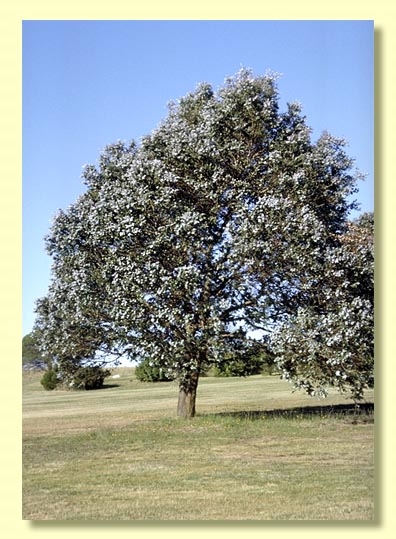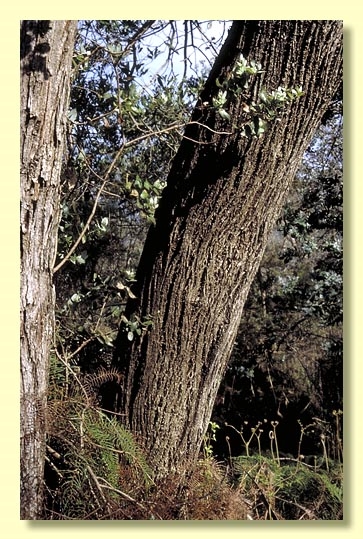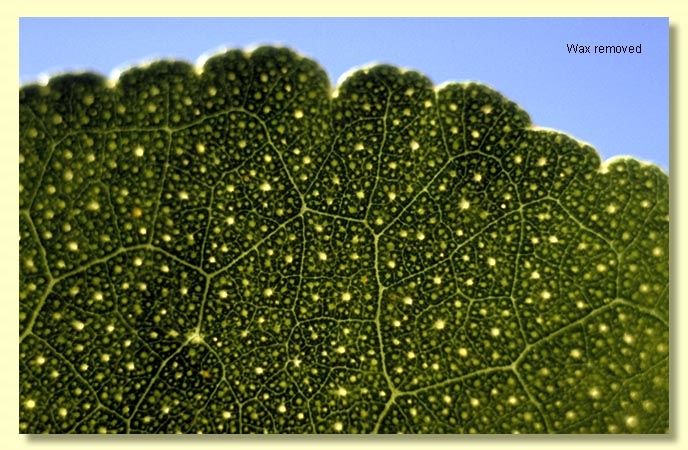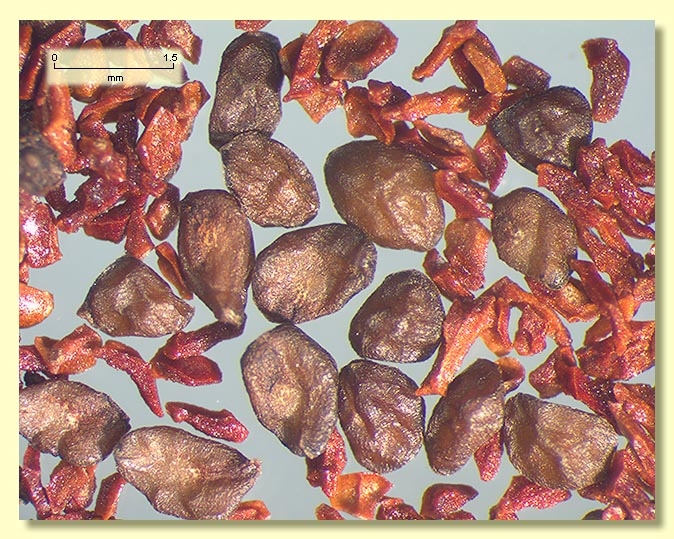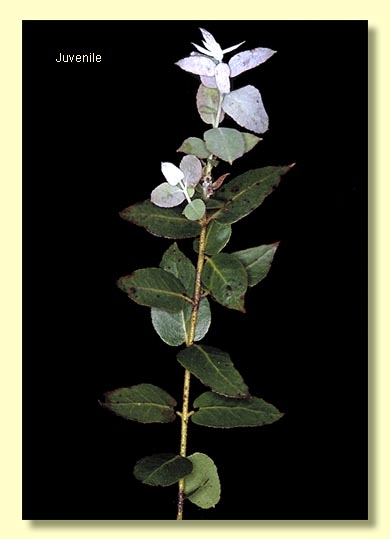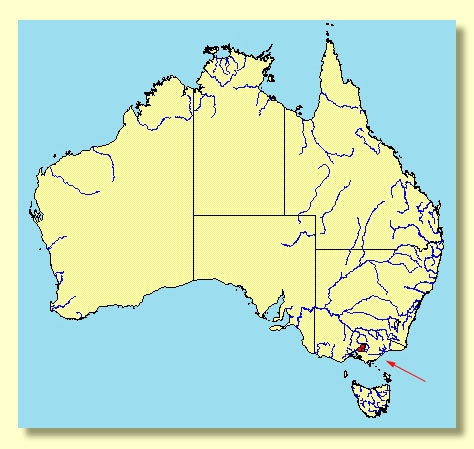Euclid - Online edition
Eucalyptus crenulata
Eucalyptus | Symphyomyrtus | Maidenaria | Euryotae | Crenulatae
T: Acheron Valley, near Buxton, Vic., 17 Sept. 1938, E.E.Pownall s.n.; holo: NSW; iso: MEL.
Tree to 12 m tall. Forming a lignotuber.
Bark rough on trunk only or extending to 8 cm diameter branches in older trees, compacted, grey, brown or black; smooth bark grey, yellow or grey-brown, branchlets glaucous or non-glaucous.
Juvenile growth (coppice or field seedlings to 50 cm): stem rounded in cross-section, glaucous, warty.
Juvenile leaves persist to mature crown, opposite, sessile, rarely shortly petiolate (to 0.6 cm); blade ovate to cordate, 2–6.5 cm long, 1.5–5.5 cm wide, margin crenulate, base amplexicaul or lobed, initially conspicuously glaucous but eventually maturing inside the crown to glossy dark green above, paler beneath, side-veins greater than 45° to midrib, moderately to densely reticulate, intramarginal vein looped and remote from margin, oil glands mostly island.
Inflorescence axillary unbranched, peduncles 0.1–0.8 cm long, buds 7, 9 or 11 per umbel, pedicels 0.1–0.4 cm long. Mature buds obovoid to ovoid or globular, 0.5–0.7 cm long, 0.3–0.4 cm wide, glaucous, smooth or warty, scar present, operculum beaked, stamens inflexed, anthers cuboid or cuneate, versatile, dorsifixed, dehiscing by longitudinal slits (non-confluent), style short or long, stigma blunt, locules 3 or 4, the placentae each with 4 vertical ovule rows; flowers white.
Fruit sessile or pedicellate (pedicels to 0.3 cm long), crowded, cup-shaped, 0.3–0.5 cm long, 0.4–0.6 cm wide, glaucous or non-glaucous, disc descending, valves 3 or 4, enclosed.
Seeds brown or grey, 1.5–2 mm long, ovoid or flattened-ovoid, often pointed at one end, lacunose, dorsal surface smooth or shallowly reticulate, hilum ventral.
Cultivated seedlings (measured at ca node 10): cotyledons bilobed to oblong; stems rounded in cross-section, glaucous, warty; leaves sessile and opposite throughout, cordate, 1.3–3.5 cm long, 1.5–2.5 cm wide, base amplexicaul, margin conspicuously crenulate, apex pointed, glaucous.
Flowering has been recorded in June and August.
Eucalyptus crenulata is widely planted as an ornamental. There are no doubt more plants in cultivation than exist in the wild.
A rare, small tree confined to swampy sites just north and south of the Dividing Range near Buxton, Narbethong and Yarra Glen north-east of Melbourne. It is closely related to no other species and is easily recognised by the crown of sessile, opposite, crenulate, glaucous juvenile leaves and the glaucous buds in umbels of 7, 9 or 11, and crowded fruit. Bark is hard and rough and the older leaves inside the crown become green and glossy, although the crown may be conspicuously glaucous with new outer leaf growth.
Eucalyptus crenulata belongs in Eucalyptus subgenus Symphyomyrtus section Maidenaria subsection Euryotae, a large group of species more or less restricted to south-eastern Australia, characterised by bilobed cotyledons, simple axillary inflorescences, buds with two opercula the outer of which sheds early, stamens with versatile anthers and flattened seeds with a ventral hilum, juvenile leaves in pairs opposite pairs and sessile on the stem. Within this section, E. crenulata stands alone in series Crenulatae having the combination of characters outlined in the paragraph above.
Eucalyptus crenulata is listed as "Endangered" under the Australian Government Environment Protection and Biodiversity Conservation Act 1999 (EPBC Act). Further information may be found at this web address:
http://www.environment.gov.au/cgi-bin/sprat/public/sprat.pl

